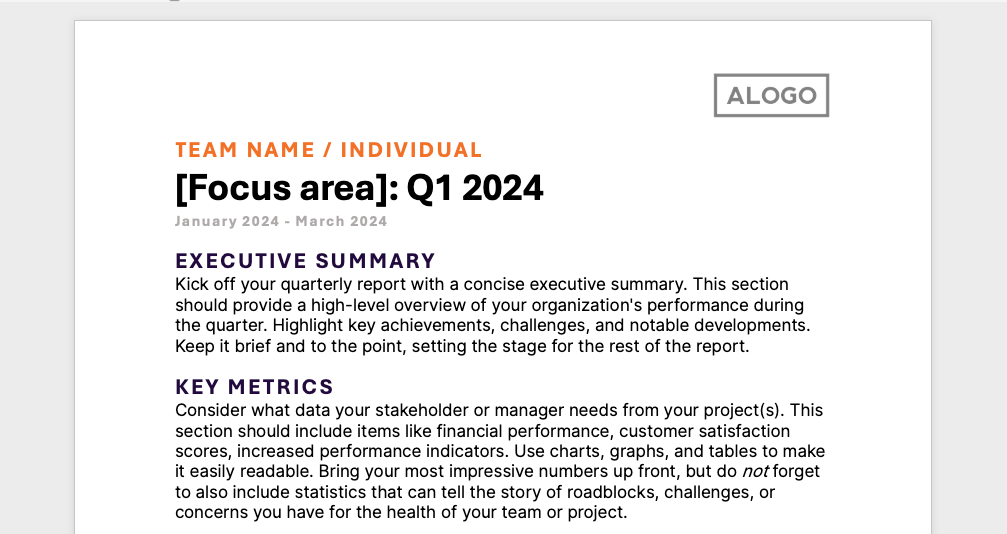Guide: Simplifying Your Quarterly Report
Introduction
(download report template at the bottom of the article)
Quarterly reports are vital tools for assessing business performance and informing stakeholders. While the process may seem daunting, breaking it down into manageable steps can streamline the task. In this guide, we'll walk you through each section of a quarterly report, providing tips to make the process easier and more effective.
Step-by-step guide
- Executive Summary
The executive summary sets the stage for your report, offering a concise overview of key highlights and insights. It should capture the essence of your report, highlighting significant achievements, challenges, and trends. Keep it brief but informative, providing stakeholders with a snapshot of the team's or project’s performance and direction. - Key Metrics
In this section, focus on presenting essential metrics and performance indicators relevant to your objectives. Choose metrics that align with your business goals and provide meaningful insights into performance. Use charts, graphs, and tables to visualize data effectively, making it easier for stakeholders to grasp key trends and patterns. - Discussion
The discussion section is where you dive deeper into the analysis of your data. Interpret the metrics presented earlier, providing context and explanations for any significant changes or trends observed. Discuss the factors driving performance, including both internal and external influences, and highlight areas of strength and improvement. - Insights
In this section, distill your analysis into actionable insights and recommendations. Identify key takeaways from the data and discuss their implications for the business. Offer strategic recommendations for future action, based on the insights gained from your analysis. Focus on practical steps that can help drive performance and achieve business objectives. - Next Quarter Expectations
Looking ahead to the next quarter, outline your expectations and plans for the future. Discuss any new initiatives or projects planned for the upcoming quarter, along with their objectives and expected outcomes. Consider any adjustments in strategy or tactics based on your analysis of current performance. Additionally, address any scope changes or shifts in priorities that may impact future operations.
Conclusion
By following these steps, you can easily tackle the process of creating a quarterly report. Remember to keep your report focused, relevant, and actionable, providing stakeholders with valuable insights and guidance for future decision-making. With a clear structure and thoughtful analysis, your quarterly reports will become powerful tools for driving business success and fostering transparency within your organization.
Recent Posts


Recent Posts




